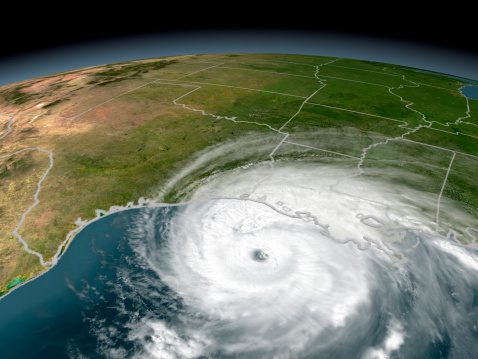Natural Disasters Can Have Devastating Impacts on Business – How Can Local Companies Prepare and Bounce Back?
Natural disasters, like hurricanes and tornadoes, can be devastating to any business. Loss of power, damage to the office and/or network and even damaged or stolen computers are just some of the issues that business owners must consider when facing a potential natural disaster. Natural disasters come in many shapes and sizes, and with Hurricane Harvey recently taking hold of Houston, many professionals across the country are looking at their own levels of protection and preparedness, wondering what impacts they might experience should disaster strike.

wants to brainstorm the best ways for professionals to prepare for disaster and protect their resources and livelihood. How should business owners prepare? What considerations should be made? What are the best options for support and consultation? In the worst-case scenario, how does a company bounce back from a disaster after it’s happened? Let’s look at some of the critical questions companies should ask themselves when preparing for and responding to a devastating natural disaster:
Make sure that you understand the difference between backup and data recovery – there is a difference. Backup is where you make copies of your data onto the cloud or external drive to be kept offsite in case of a disaster or other catastrophic event. Having the right data recovery system means you have a strategic plan in place to have your data recovered and productivity reinstated when responding to a disaster.
You don’t want recovery to go wrong or to lose the data again, so it’s often a great idea to seek consultation and support from an experienced IT service provider. IT professionals can help ensure that both backup and recovery plans are implemented seamlessly. However, no matter how much support or assistance a business seeks out, business owners still must play an active part in both preparing for and responding to disasters. At the end of the day, no one knows the layout of their company like the team that runs it. It falls on the business owner to consider the big questions like:
With so many considerations to make, business owners can often feel overwhelmed when trying to get prepared or trying to restore operations. The worst thing for professionals to do is avoid the stress altogether and put off disaster recovery planning. has created a list of the TOP 3 rules business owners should follow when considering disaster response plans:
FIND A GOOD IT SERVICES COMPANY
Some small businesses think that they can save capital and take care of issues internally by hiring an in-house IT guy instead of an MSP. Depending on the scope of the business, for some, this may be a suitable option. However, for businesses unsure of where to start or looking for iron-clad reliability, connecting with an MSP is the safest bet. Even if it isn’t feasible for a company to take on fully-managed IT services, an MSP can offer strategic insights to put professionals on the right track.
In addition to their strategic experience and expertise, most MSPs can offer cloud storage to store business data as well as a comprehensive disaster recovery service should a company go down during a big storm. Beyond storage, an MSP can offer unparalleled support to help get company resources restored and running after a disaster. Lastly, for what it’s worth, an MSP can probably get productivity restored a lot faster than Bob in accounting, who has also been taking on IT issues as they arise.
SETUP A SECURE BACKUP IN THE CLOUD
Setting up secure backup solutions ensures that company data is replicated safely in an online storage location. Ideally, data should be backed-up in more than one place, like the cloud AND an off-site physical location. Regardless of where you store your data, the golden rule of backups is to never keep your data stored in the same place as the originals.
If your area is prone to hurricanes or tornadoes, then it might not be a bad idea to back up your data in the second server outside your geographic location. If original data is lost and local back-ups can’t be accessed due to storm conditions, it’s incredibly strategic to have data sitting in a safe, out-of-town, storage space where it can be retrieved without jumping over hurdles.
TEST EVERYTHING TWICE!
This third rule is perhaps the most important. The last thing a company wants to hear after a disaster is that online backups didn’t work or that your resources simply won’t rebound after a power failure. Testing the reliance of backups and executing “disaster recovery drills” is critical to ensuring a company’s data will be accessible and their recovery plan will be executed correctly. Never assume that everything is safe and functional. Test backup and disaster recovery methods frequently and any reported issues should be addressed and rectified immediately.
The cost of business interruption can be devastating if a business is unprepared. With images of Hurricane Harvey all over the news, wants local businesses to know that if and when disaster strikes here in , they are never alone. has the experience, resources, and strategies available to help local business owners get prepared for impending disasters or rebound from the devastating impacts.
Don’t wait for disaster to strike. Reach out for consultation and help from at to see what they can do to prepare your business for disaster or bring your business back from the brink.